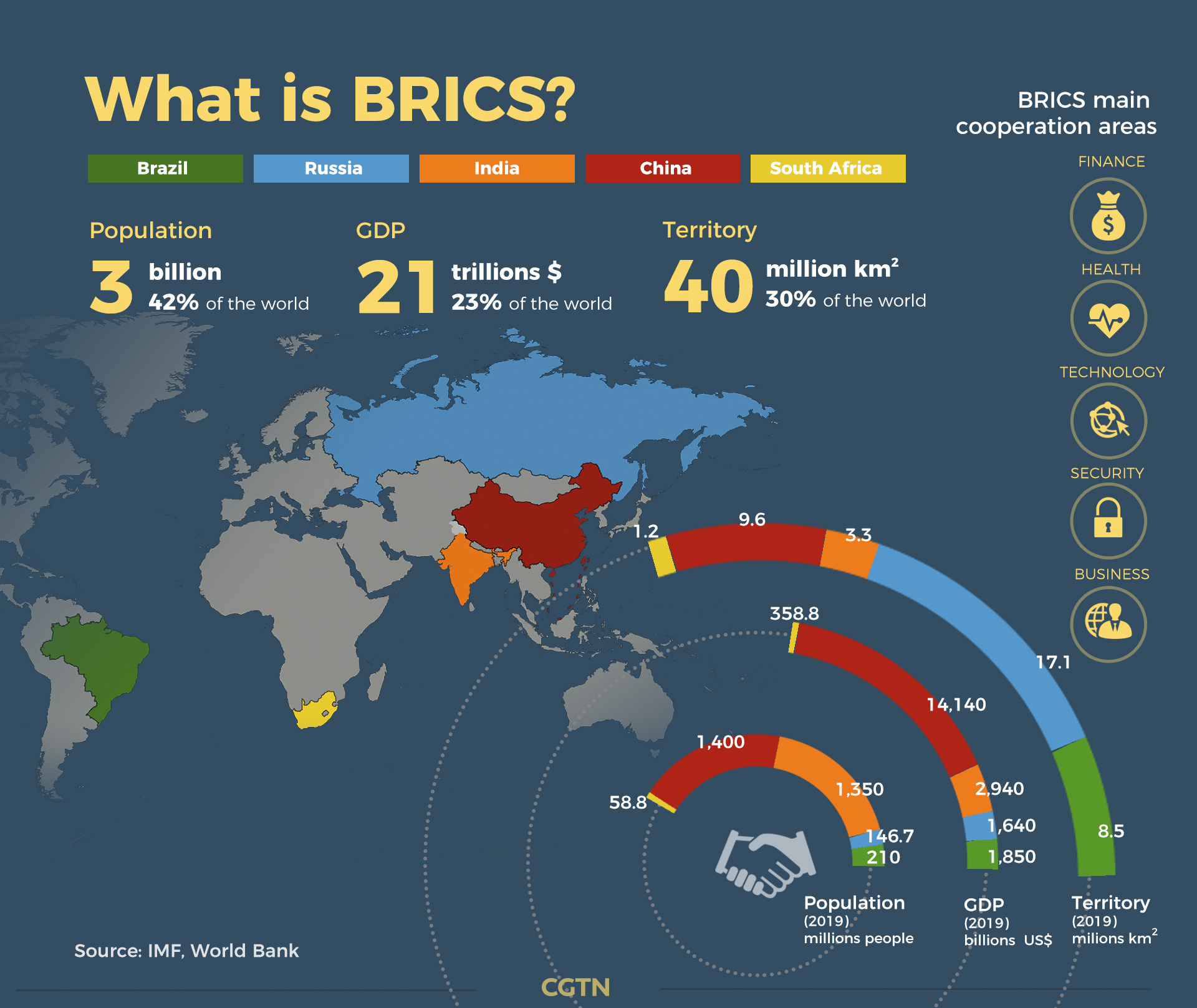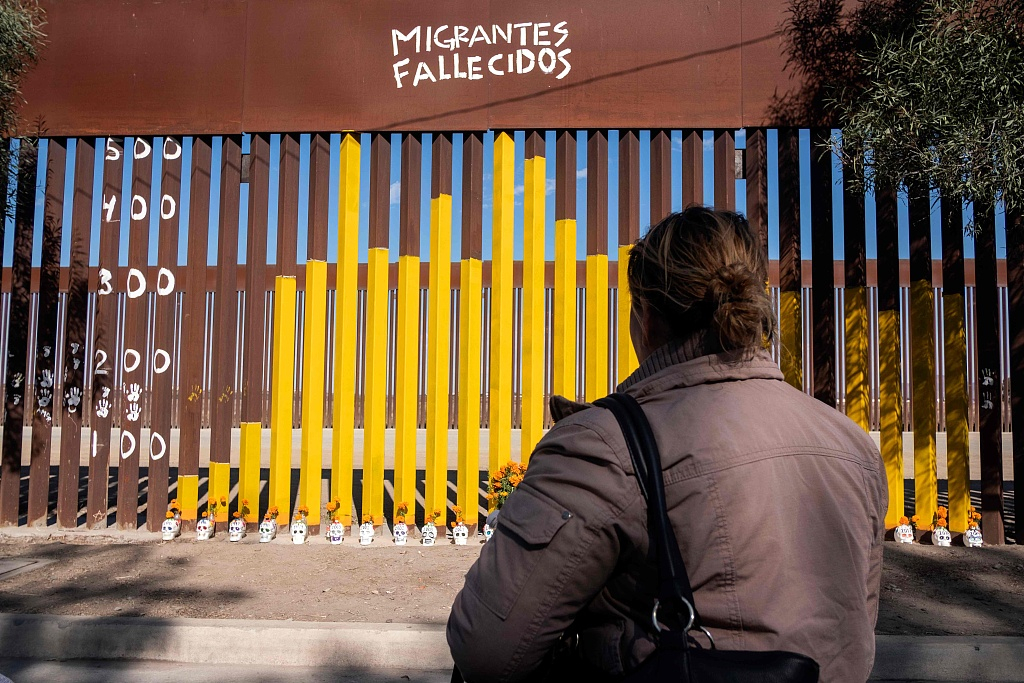China and Latin America may be on opposite sides of the globe but they're getting closer through commercial trade and investments. As Chinese President Xi Jinping's trip to Brazil for the 11th BRICS is around corner, the two regions will definitely further boost mutually beneficial cooperation.
Rapidly expanding in the region, China-proposed Belt and Road Initiative (BRI) will in turn provide a more pragmatic road map and opportunity for cooperation within BRICS.
02:20

'Thank you, China'
The first train entirely made up of Chinese-made carriages started operating in early July between Havana and Santiago de Cuba, the island country's second largest city.
"Thank you, China," the passengers, who were on the maiden voyage of the new railroad cars that Cuba has received for the first time in 44 years, told media.
Besides trains, the two regions also eye on hydropower project among their infrastructure cooperation, for example, the two China-invested hydroelectric dams in southern Argentina.
Condor Cliff and La Barrancosa, according to Argentina's President Mauricio Macri, are "highly important" and "emblematic" in terms of renewable energy and economic development.

This year marks the fifth anniversary of the idea of forging a community with a shared future between China and Latin America. Under the BRI, the two regions have gotten closer through commercial trade and investments in fields from avocado, quinoa and coffee to textile, biomedicine and tourism products.
Proposed in 2013, the BRI aims to build trade and infrastructure networks connecting Asia with Europe and Africa on and beyond the ancient Silk Road routes.
So far, 18 Latin American countries have signed the Memorandum of Understanding on jointly building the Belt and Road cooperation with China.
Ahead of Xi's tour, Chinese Vice Foreign Minister Qin Gang also briefed the nation's willingness to work with concerned parties to accelerate the development of the BRICS partnership and tap more potential for cooperation projects, so as to propel high-quality development of the five countries.
'Still lots of space'
Noting that the BRI is only in its early stages in Latin America, Enrique Garcia, former president and CEO of the Development Bank of Latin America, looked forward to the initiative making more contributions to the region based on its successful track record in Asian and African countries.
"I would recommend Latin American countries to be more involved in the BRI," he said.
02:13

For his part, Luis Alberto Moreno, president of the Inter-American Development Bank (IDB), also believed there is "a lot of space for cooperation" with China in the Latin American region under the framework of BRI.
Moreno noted that "the big challenge" for the region is to diversify its exports to China. "Even though I must accept that we as a region are largely commodity producers, but we do many other things," he said.
"So we need to find ways for Chinese to drink more coffee, for instance, which would help countries like Brazil, or my home country Colombia or Central American countries."
This aims to promote a more equitable, open, transparent and inclusive global governance system and safeguard common interests and development space of emerging markets and developing countries.
Thus Ma noted that China believes the five BRICS countries should follow the trend of the new industrial revolution and facilitate economic transformation and upgrading.
'A 300-bln-U.S. dollars wall'
Violences in Chile and Bolivia are not the only challenges facing Latin America nowadays, but also pressure from the U.S. side.
For almost 40 years, Latin American countries have struggled to realign economies with global markets. As China's BRI continues to gain its momentum in the region, U.S. chose to spend its money on building a 300 billion U.S. dollars wall along its southern border and even tried to put the bill on Mexico.

A woman looks at a painting made by migrants and members of the Coalicion Pro Defensa del Migrante (Pro Defense of the Migrant Coalition) on the Mexican side of the U.S.-Mexico border in Tijuana, Baja California state, Mexico, November 2, 2019. /VCG Photo
A woman looks at a painting made by migrants and members of the Coalicion Pro Defensa del Migrante (Pro Defense of the Migrant Coalition) on the Mexican side of the U.S.-Mexico border in Tijuana, Baja California state, Mexico, November 2, 2019. /VCG Photo
Launching its own plan of "Alliance for Prosperity," the U.S. proposed to curb migration from the "Northern Triangle" of El Salvador, Guatemala and Honduras.
Meanwhile, the Chinese companies have used the same amount of money in bringing in investments to Latin America,cumulatively creating more than 1.8 million jobs for local people.
In 2018, Chinese investment in Latin America exceeded 300 billion U.S. dollars, a 30-fold boost in less than two decades.
President Xi expected that by 2025, that number would have reached 500 billion U.S. dollars.
Comparatively, U.S. investments in the region have shrunk by 42 percent since President Donald Trump came to power in 2018.
Many Latin American countries, including Mexico and U.S. long-time ally Jamaica, have pivoted to China's Belt and Road for trade expansion and infrastructure investments.
As U.S. continues to counter China's growing influence in the heated region and the entire globe, the world's two largest economies still see both challenges and opportunities of cooperation abound on a long path ahead.